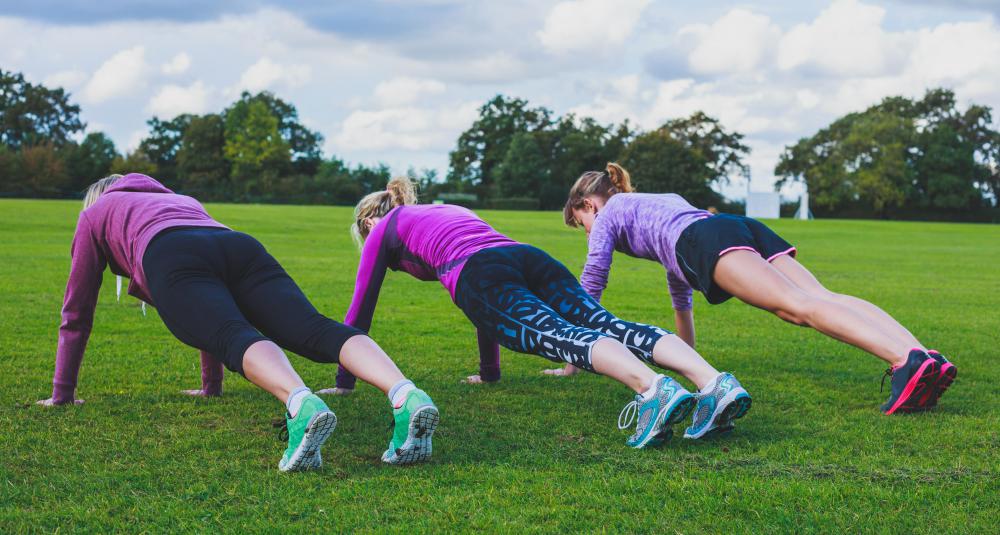At WiseGEEK, we're committed to delivering accurate, trustworthy information. Our expert-authored content is rigorously fact-checked and sourced from credible authorities. Discover how we uphold the highest standards in providing you with reliable knowledge.
What is a Glute Ham Raise?
The glute ham raise, or GHR, is a compound exercise that works out each part of the posterior chain, including the lower back, glutes, hamstrings and calves. With the feet secured, the athlete starts by lying face down, usually with some form of padding just above the knees. Then, bending only at the knee, he or she rises from this horizontal position to a vertical one. He then lowers himself back down to the original horizontal position.
While the motion that glute ham raises require is rather simple, the exercise is quite challenging, and many inexperienced athletes find it difficult to perform at first. This is because the only joint that moves is the knee, so the posterior muscles are lifting almost the entire body all at once. If an athlete struggles with this exercise, he or she can do two things to make it easier. The first is to begin from a vertical position and slowly lower himself or herself without going so far that raising back up becomes too difficult. Another option is to perform the exercise on the floor and begin with a push-up to generate momentum to help the posterior muscles raise the body into a vertical position.

Another challenge of glute ham raises is finding the necessary equipment. The safest way to perform them is by using a glute ham raise bench. This device will lock the feet in place and has an adjustable pad for the knees. For athletes who don't have access to a glute ham raise bench, a natural glute ham raise is possible. This involves placing some form of padding above the knee and having someone hold the feet in place. The athlete then performs the exercise just as he or she would if he a glute ham raise bench were being used. When there is no one available to hold the feet, the athlete can use any number of makeshift items to secure them in place, but this is not as safe as the other two options.

Despite the difficulties involved in performing glute ham raises, they are an extremely beneficial exercise. They target the lower back, glutes, hamstrings and calves at the same time, so they are able to provide a very intense workout in a single exercise. Also, they train the hamstring at both the hip and the knee joint, which strengthens the muscles far more than exercises that target only one of those joints, such as leg curls. Targeting both joints reduces the risk of injuries, especially hamstring pulls.
In order to achieve these benefits, it is imperative that the athlete maintain proper form throughout the exercise. Athletes who aren't familiar with the glute ham raise often will bend at the waist while moving between the horizontal and vertical positions. This reduces the benefits and can lead to injury. Once the athlete does master the correct form, though, he or she can begin to increase resistance by holding a weight against the chest during the exercise.
AS FEATURED ON:
AS FEATURED ON:












Discuss this Article
Post your comments